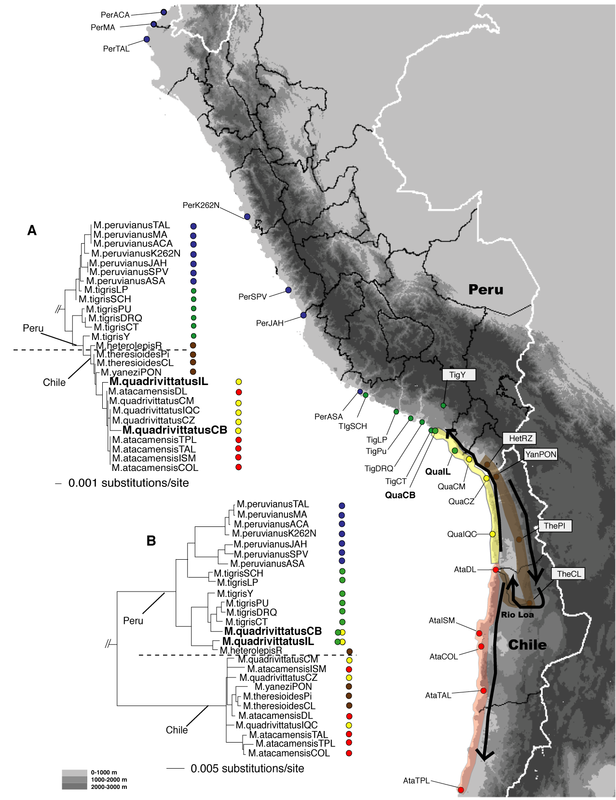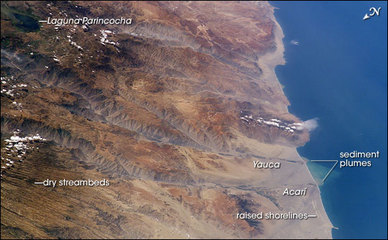The Peru - Chile Coastal Desert and patterns of 'lineal' genetic differentiation
|
The Peru – Chile coastal Desert (PCD) is, in my opinion, the last ignored Neotropical province. This may be a direct effect of its narrowness, the fact that some parts are arid to hyper-arid, or the fact that very few biologists have characterized its diversity in a comparative setting. The PCD is a fascinating biome, and I first became interested in this part of the Neotropics because Microlophus lizards are endemic to this region.
Notably, the PCD history is far more complex and interesting than what is normally expected. The most significant fact is that some of the PCD endemics are older than most endemics from the high Andean plateau. They are in fact, sister, to lineages still represented by taxa on the eastern Andes versant. That is, lineages that originated before the Andes orogeny (e.g, Microlophus and Tropidurus Lizards from Brazil are sister clades). A number of collaborators in Peru and Chile have helped me sampling Microlophus along the PCD. In this work in progress we have found complex phylogeographic patterns in what otherwise should show a simple Isolation-by-distance signature. For example, secondary contact between coastal lineages have produced asymmetrical mtDNA introgression (Figure to the left), revealing that there is more than a single dispersal direction in this relatively narrow natural corridor. There are interesting biogeographic consequences to these findings. Normally, one would expect phylogeographic structure to be the outcome of present or past geographic barriers. These barriers are virtually non-existing along the PCD. A closer look to the origins of this geographic and genealogical variation would clarify some history of this and, by extension, nearby biomes. |


